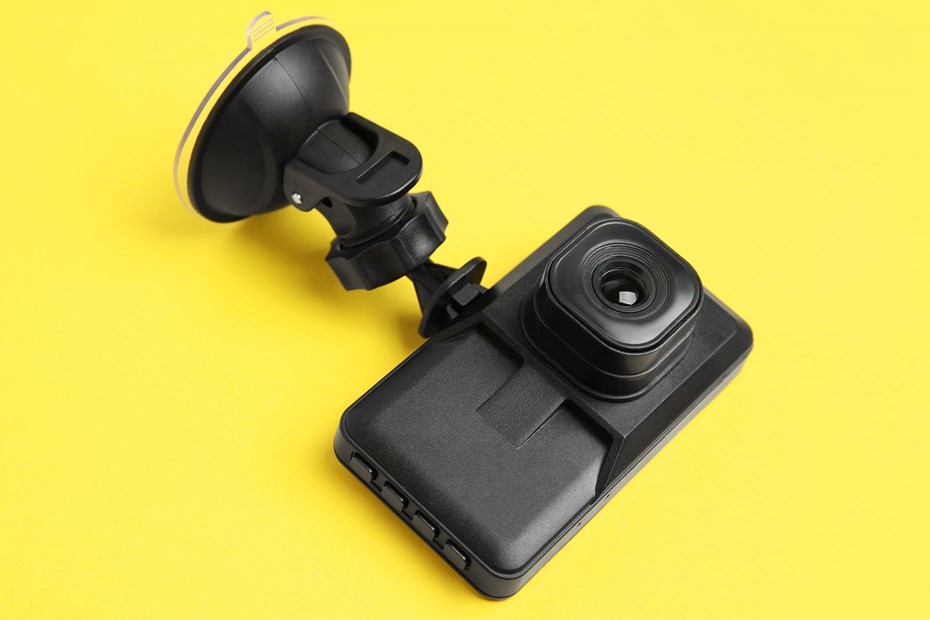If you frequently browse car websites or follow the news, you’ve likely come across dashcams for cars more than once. Whether it’s articles exposing cash-for-crash schemes, viral videos capturing road incidents, or top-ten lists of the best dashcams for cars on the UK market, these devices are becoming increasingly hard to ignore.
You’ve probably worked out dashcams record what’s happening on the road ahead and, in some cases, on the road behind. Should the driver get involved in an incident or accident that wasn’t their fault, the footage captured by the dashcam can make it easy to protect against fraudulent claims.
That peace of mind can make driving less stressful and having a dashcam can sometimes reduce your insurance premiums. Dashcams have lots of other features, as we’ll explain, and there are lots of them to choose from.
Given that driving standards appear to be tumbling on UK roads, you may well be considering buying a dashcam. To make your research easier, and to get you on your way to picking out your first camera, our guide explains everything you need to know about dashcams and highlights the ones we think are best.
How do dashcams work?
A dashcam is effectively a small video camera. You attach it to your car’s dashboard or windscreen in a position that gives a good view of the road ahead, and it records footage as you drive along.
Power for the dashcam comes from your car, either through a cable connected to a USB port or 12-volt socket, or from a permanently wired connection. When you start the car, the dashcam should power up and start recording.
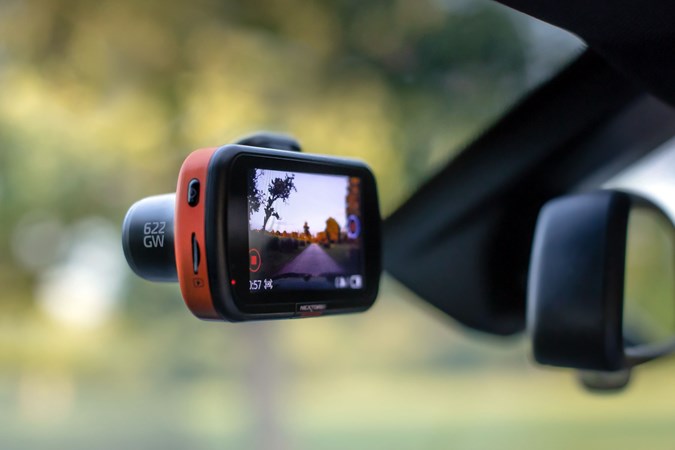
Footage is stored on a memory card in the dashcam but, to avoid filling it up, dashcams use a process called loop recording. The camera records short clips, maybe several minutes long, then continuously overwrites older footage with new.
Many dashcams are fitted with a G-force sensor that detects changes in acceleration. If a significant change is detected – if a car hits you, or you have to perform an emergency stop – the camera automatically saves the most recent footage to ensure it remains available. Alternatively, you can manually trigger the camera to save the relevant footage so you can download or view it later.
Dashcams have lots of other features, as well. They can include a parking mode, which turns the camera on to record if it senses your car being bumped. It will then record a short clip, hopefully capturing whatever struck your vehicle. This evidence can then be used to seek compensation.
Some dashcams also have an additional camera for recording what’s going on behind the car, boosting their usefulness further, as well as features such as app support and Wi-Fi connectivity.
Why should I buy a dashcam?
A dashcam can help protect you against fraudulent ‘crash-for-cash’ insurance claims and indeed provide valuable evidence if you get into a genuine accident. The footage captured by the camera can help identify what happened and who was in the wrong, which could save you from a lot of stress and hassle.
Parking mode can also give you significant reassurance. Should you return and find fresh damage, the camera can provide enough information to allow your insurers or the police to resolve the matter a secure a pay-out.
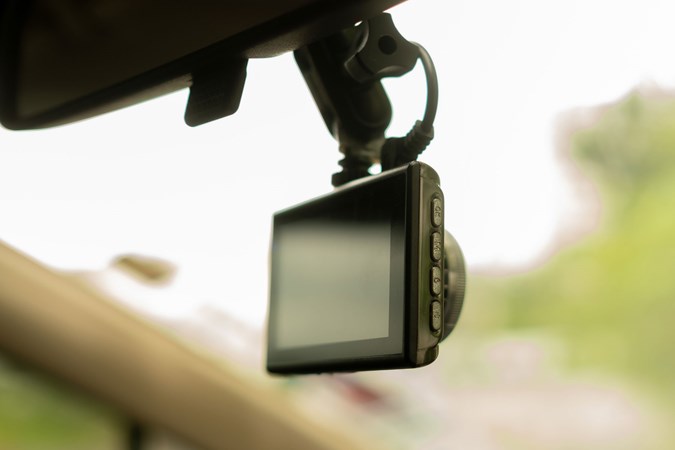
Dashcams can be used to report dangerous drivers, too. Your camera might capture footage of someone driving erratically or travelling well over the speed limit, which can then be forwarded to the police. If the driver can be identified, they may be prosecuted for the offence.
Dashcams can also reduce your insurance premiums, though the size of any discount depends on individual insurers. Be mindful that you have to weigh that against the cost of buying a camera.
What different types of dashcam are there?
Front-facing dashcams
These have one forward-facing camera which captures what’s going on directly ahead of your car. They are the easiest to install, and often just need to be attached to your windscreen and plugged in. However, they don’t record what happens at the sides and rear of the car.
Front- and rear-facing dashcams
These dual dash cameras come with an extra camera to record what happens directly behind your car. The front-facing camera still attaches to the windscreen or dashboard, and the rear-facing goes in the back window or fixes to the headlining. They are often more complicated to install, as the rear-facing camera is typically standalone and needs wiring into a power supply. The effort is worth it, though. Rear-end accidents are common, and rear-facing cameras are ready to capture any collisions.
Mirror cams
A mirror cam fits over your rear-view mirror and typically includes a front-facing camera, a cabled rear-facing camera, and a conventional mirror element. When the display is turned on, you can view footage from the cameras; many such systems also include a reverse parking aid. However, because they are quite expensive and somewhat limited in their capabilities, mirror cams are only really worth considering if rear visibility is a problem in your vehicle. In a van, for instance, the cabled rear camera and mirror cam unit can function as a conventional mirror, providing an unobstructed view behind the vehicle.
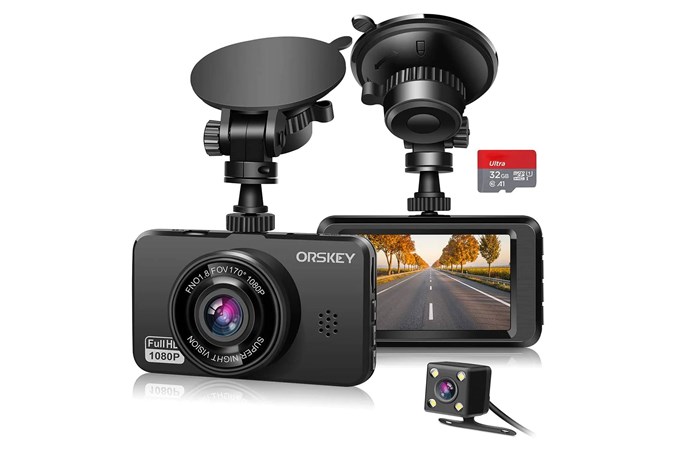
What do I need to look out for when buying a dashcam?
There are many things to consider when shopping for a car dashcam, from the type of unit you want to the features it supports.
Parkers has a comprehensive guide to the best dashcam features, which should help point you in the right direction. The article also covers the ideal basic specification you should aim for, in order to ensure reliable video capture and usable footage.
At a minimum, though, bear in mind the following:
Single or dual camera: A conventional forward-looking dashcam has just a single camera, and will record the view ahead of the car. If you want more protection and reassurance, you might want a dual-camera set-up, which will also record the view behind. These additional rear-facing cameras are sometimes integrated, or cabled to the dashcam and attached to the rear screen.
Recording resolution: There are lots of things that affect the clarity of dashcam footage including the quality of its lens, but the quoted resolution can give you some idea of its capabilities. Some dashcams record in standard HD, known as 720p, which is 1,280×780 pixels. That’s adequate, but 1080p Full HD – 1,920×1,080 pixels – is a better bet. More pixels capture more detailed images, so it’s easier to pick out things like number plates from the footage. Got a bigger budget? Go for 1440p, sometimes called Quad HD or 2K, or 2160p 4K.
Recording frame rate: Most dashcams record at 30 frames per second – that’s the number of individual images captured per second. These images are then stitched together to produce a moving clip. Some record at 60fps, or even higher, allowing you to capture more detail in faster-moving moments. There are trade-offs, though; 60fps footage takes up more space and isn’t as good at night as less light is captured by the camera. This is why 30fps, in 1080p or 1440p resolutions, tends to be the most common configuration.
G-force sensor: Also called an accelerometer, this allows the camera to detect sudden changes in vehicle speed and direction, such as those caused by heavy braking or an impact. When the sensor is triggered, the camera automatically saves the most recent footage, securing it for later use.
GPS: A GPS connection embeds your car’s speed and location into the recorded footage. This additional data can be useful evidence when identifying what happened during an incident or accident.
Parking mode: Any incidents that occur when the vehicle is stationary will cause the camera to wake up and record, hopefully capturing enough evidence to help you resolve any claims.
Remember to check out our article on best dashcam features for additional insight into the best standard features and useful extras that might be of benefit to you.
How do I fit a dashcam?
Most dashcams tend to be easy to fit. Usually, fitting a forward-facing unit in a car involves adhering the camera to the windscreen, using either a suction pad or some adhesive tape, and then plugging it in. The power cable, which is connected to a USB port or 12-volt socket, can then be tucked neatly out of sight. You can also get kits that plumb the camera into the car’s fusebox. Some car manufacturers, including Skoda, provide USB-C ports in the rear-view mirror mount, specifically for a dashcam.
Remember that a dashcam must not be in a position that obstructs your view of the road – it’s best to mount it in the space between the rear-view mirror and windscreen.
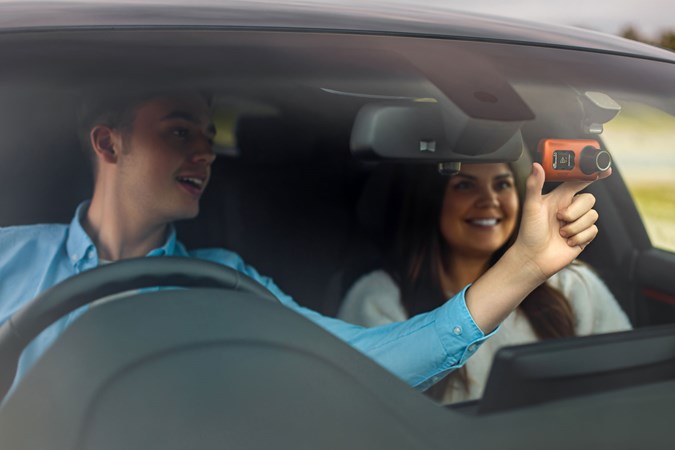
Dual-camera dashcams take more time and effort to fit, as you need to thread the cables from the front of the car to the rear, either securing them to the headlining or hiding them behind it. Some dual cameras have both the front- and rear-facing cameras in the same unit so are easier to install. However, they have to be positioned to give the rear-facing camera as good a view out of the back of the car as possible.
If a reversing aid mode is offered, you’ll also have to wire up the unit to your car’s reversing lights so that it knows when reverse has been selected. This can complicate things but, fortunately, there are plenty of professional dashcam installers around. They generally charge perfectly reasonable rates, so could be the ideal solution if you don’t have the required skills, time, tools, or inclination.
What is dashcam hardwiring?
You may see dashcam hardwiring kits online, or talk of permanently installing or wiring up a dashcam. Hardwiring a dashcam just means that it draws power directly from the car through a dedicated wiring harness, instead of from a cable plugged into a 12-volt socket or USB port.
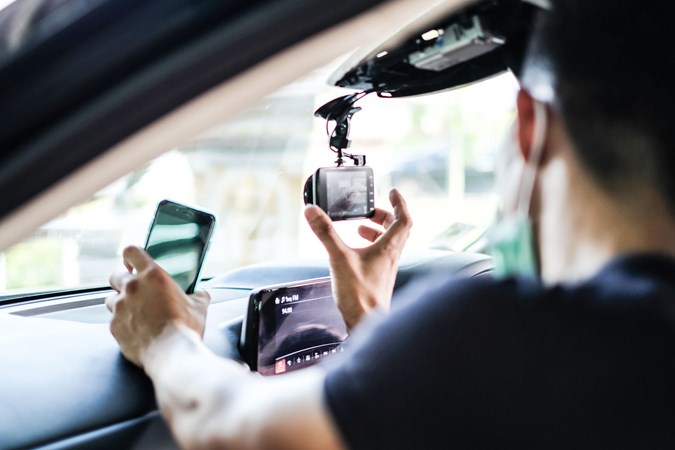
It’s a neater installation because the power cable is concealed behind the car’s trim panels. More importantly, it ensures the dashcam always has power, even when the car is turned off, ensuring it’s ready to capture footage when required. This is important if you want to use features such as a parking mode.
You can find out more about this process in our guide to dashcam installation.
Where can I buy a dashcam?
Dashcams are readily available online from sites such as Amazon, Argos and eBay. But you’ll also find them in car parts shops such as Halfords. It’s worth shopping around to check out what deals are available, or to find the best price if you know exactly which one you want.
Remember to check out our dashcam reviews, too, as you might find dashcam offer prices that are lower than those available elsewhere.
What about dashcam memory cards?
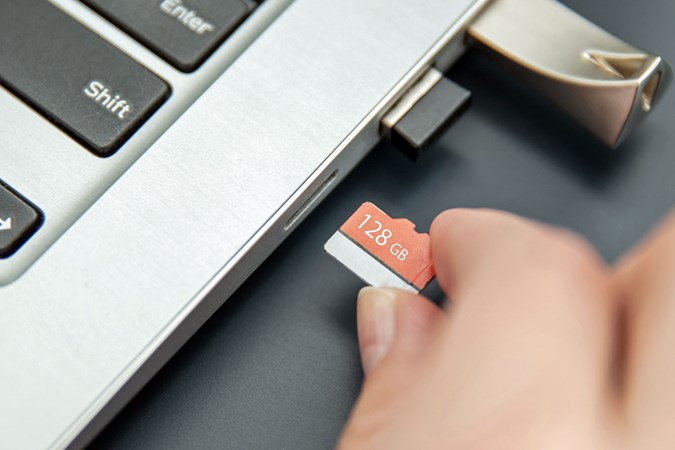
Some dashcams have built-in memory that you access via a cable to your laptop, or connecting the camera to your phone via Bluetooth. Others use a memory card, but need to get the right one. Check out our guide to dashcam memory cards to find what you should look for.
Dashcams require a lot storage, and small-capacity memory cards may not be able to hold much footage. This can lead to issues like file corruption, recording failures, or the dashcam simply reporting that the memory card is full when it isn’t. So, read up on dashcam memory cards before you take the plunge.
What dashcam does Parkers recommend?
There are lots of great options out there on the UK dashcam market, including popular choices such as the Nextbase 622GW, Thinkware U1000, and Orskey CameraCore S900. Many of these feature in top recommendation lists, including those on the best dashcams, the best dual dashcams, and the best high-tech dashcams.
The Nextbase 522GW strikes a great balance between quality, features and price. It’s not overly expensive and features 1440p video capture, a 140-degree viewing angle, a polarising filter, a G-force sensor, GPS, an SOS system, and built-in Amazon Alexa connectivity.
It’s a great buy for the money but, if you want a few more features and have a bigger budget, there’s always the Nextbase 622GW.
Front-facing dashcam
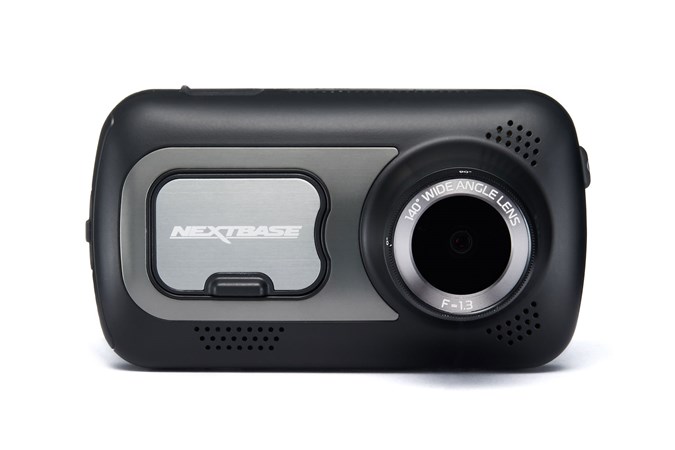

| Resolution/frame rate: | 1440p/30fps; 1080p/60fps |
| Field of view: | 140° |
| Screen size: | 3-inch touchscreen |
| Max memory card size: | 128GB |
| Bluetooth: | Yes |
| Wi-Fi: | Yes |
| GPS: | Yes |
Read our full Nextbase 522GW and 622GW comparison feature
Are there any other safety or security technologies I should consider?
If you’re considering a dashcam as a security measure for capturing footage of damage that might occur while your car is parked, you may also be interested in a car tracker.
These devices allow you to remotely locate your car if the worst happens and it is stolen, so you can hopefully find it and guide the authorities to its location.
If you want to increase the security of your car, it’s also worth considering the steering wheel locks. You can also protect the keys from being cloned with RFID and Faraday car key pouches.
Drivers who want to further reduce the cost of their insurance premiums could benefit from a telematics system. These ‘black box’ solutions, offered by many insurers, monitor your driving style and journeys, and the data collated can allow you to reduce your monthly insurance bills.
Looking for more jargon-busting motoring meanings? Head over to our Parkers Car Glossary page and take a look at our other definitions
Just so you know, we may receive a commission or other compensation from the links on this website - read why you should trust us.


